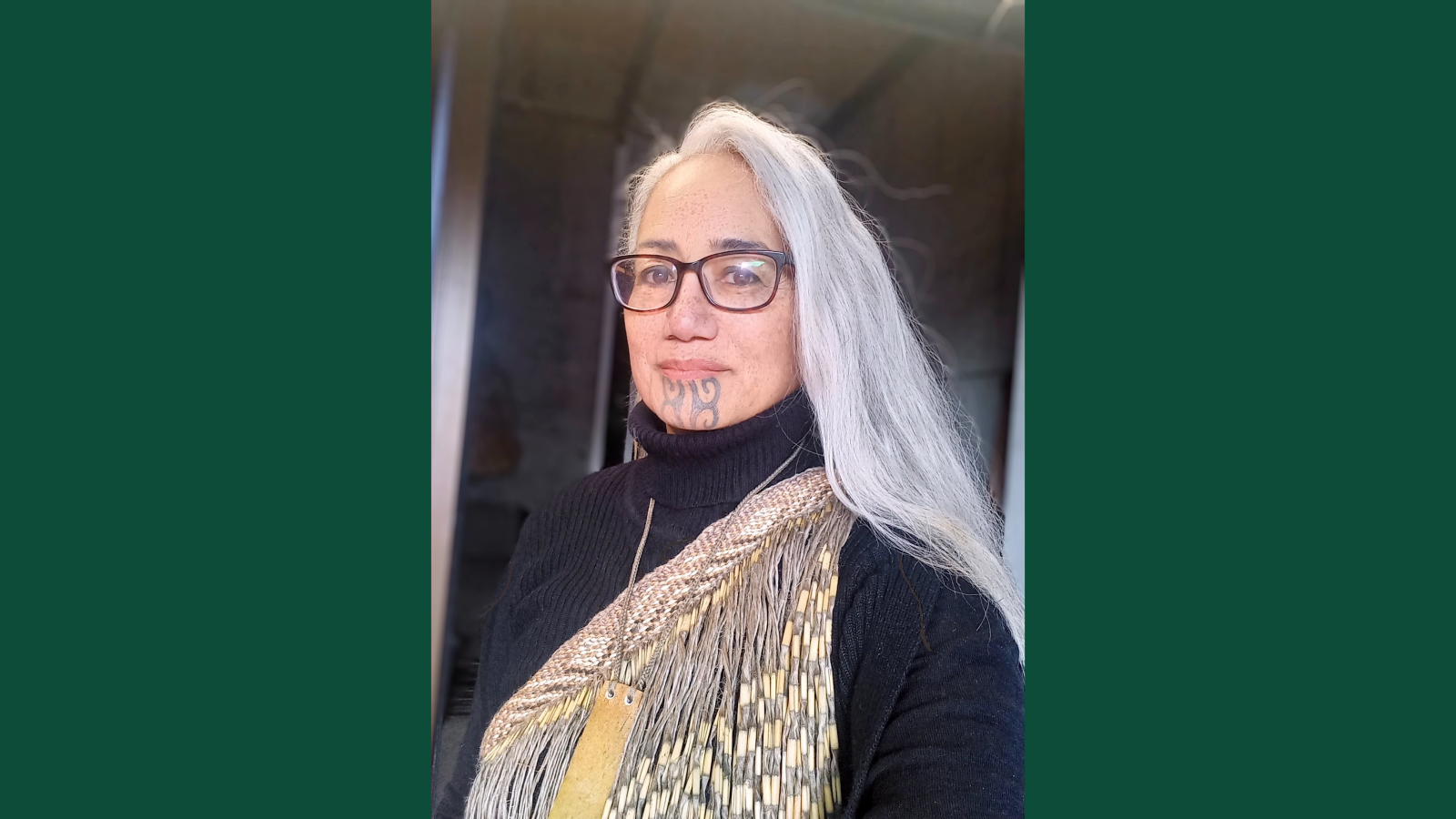The living cultural practice of Māori weaving
Awhina Tamarapa (Ngāti Kahungunu, Ngāti Ruanui) is graduating this May with a PhD in Museum Heritage Studies.

For her PhD, Dr Awhina Tamarapa looked at the role of museums in the maintenance of Māori weaving as a living cultural practice, and whether or not museums recognise the mana of weavers who hold the mauri of their practice.
“I wanted to look at how museums can best serve Māori people,” she says.
“So I looked at weaving as one aspect of our cultural practice that can shine a little light on how museums can change to better support Māori people.”
The PhD was a continuation of Dr Tamarapa’s earlier studies, as well as to reflect back on her practice as a Māori curator and museum professional. She graduated with a Bachelor of Arts in Māori Studies and Anthropology from Te Herenga Waka—Victoria University of Wellington in 1992, and went on earn another bachelor’s degree in Māori Law and Philosophy at Te Wānanga o Raukawa. She also has a Master of Arts in Museum Studies from Massey University.
Dr Tamarapa started her museum career at Te Papa as a trainee in 1989, and worked as a Māori curator for many years. She has also worked at Te Herenga Waka as a course coordinator and teaching fellow for the Museum and Heritage Studies programme at the Stout Research Centre for New Zealand Studies.
“I loved doing my PhD,” she says. “Learning is a lifetime thing. So what I loved about it was gaining tools and learning how to think critically about things, as well as that process of self-reflection, self-examination. It’s really important, especially in our line of work, so I found it very useful and very beneficial.”
Dr Tamarapa has been interested in Māori cultural heritage since childhood, and taonga in particular, which is what drew her to museum work in the first place.
“This work enables me to be able to go to places like museums and make connections, to recover mātauranga knowledge that is really important to our communities, and be able to feed back that information. I feel like I’m of service to my people in an area that I’ve spent a long time working.”
She says ‘light bulb moments’ were a highlight of her PhD experience. “Those moments where I suddenly hit on something that explains things I’ve been grappling with for many months.”
Another highlight was sharing the achievement of completion with her mentors, fellow practitioners, colleagues, and whānau, and knowing that her parents and grandparents would have been proud of her. “I’m grateful to everyone that has helped me along this pathway, and I hope to be able to further my research in different areas, to uphold the knowledge and authority of Māori people.”
Following on from her PhD, Dr Tamarapa is now working on a three-year fellowship as a postdoctoral researcher at Te Herenga Waka, which she describes as a ‘dream job’.
“My topic is Māori musical instruments and Māori figures with movable limbs, called karetao, keretao, or tokoraurape, among other names. I aim to locate them in museums overseas, collate the information, and then start to pull together ways in which communities and practitioners are able to access that information.”
“Lots of researchers have looked at different things over the years but I think there needs to be a central puna mātauranga that can be developed to enable people to engage better with taonga that are overseas.”
